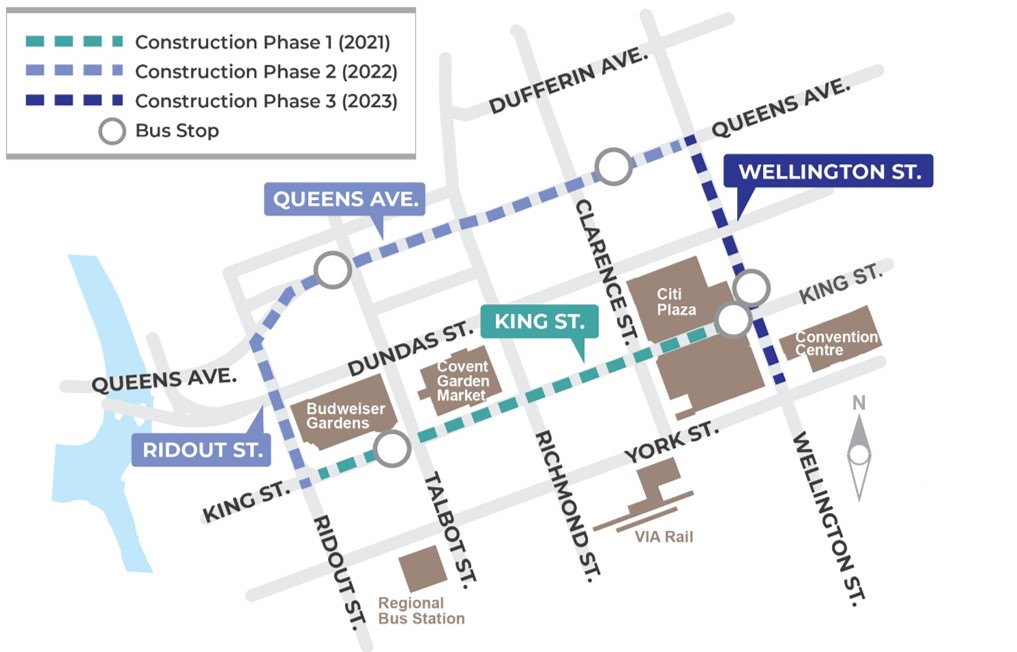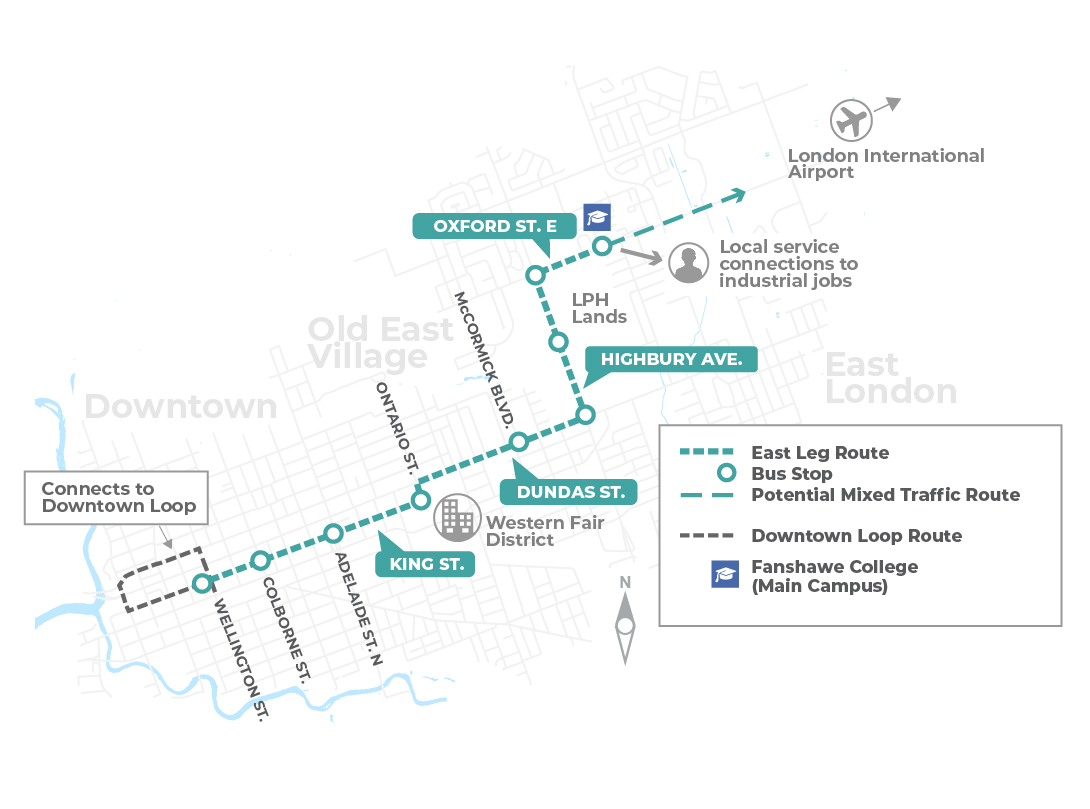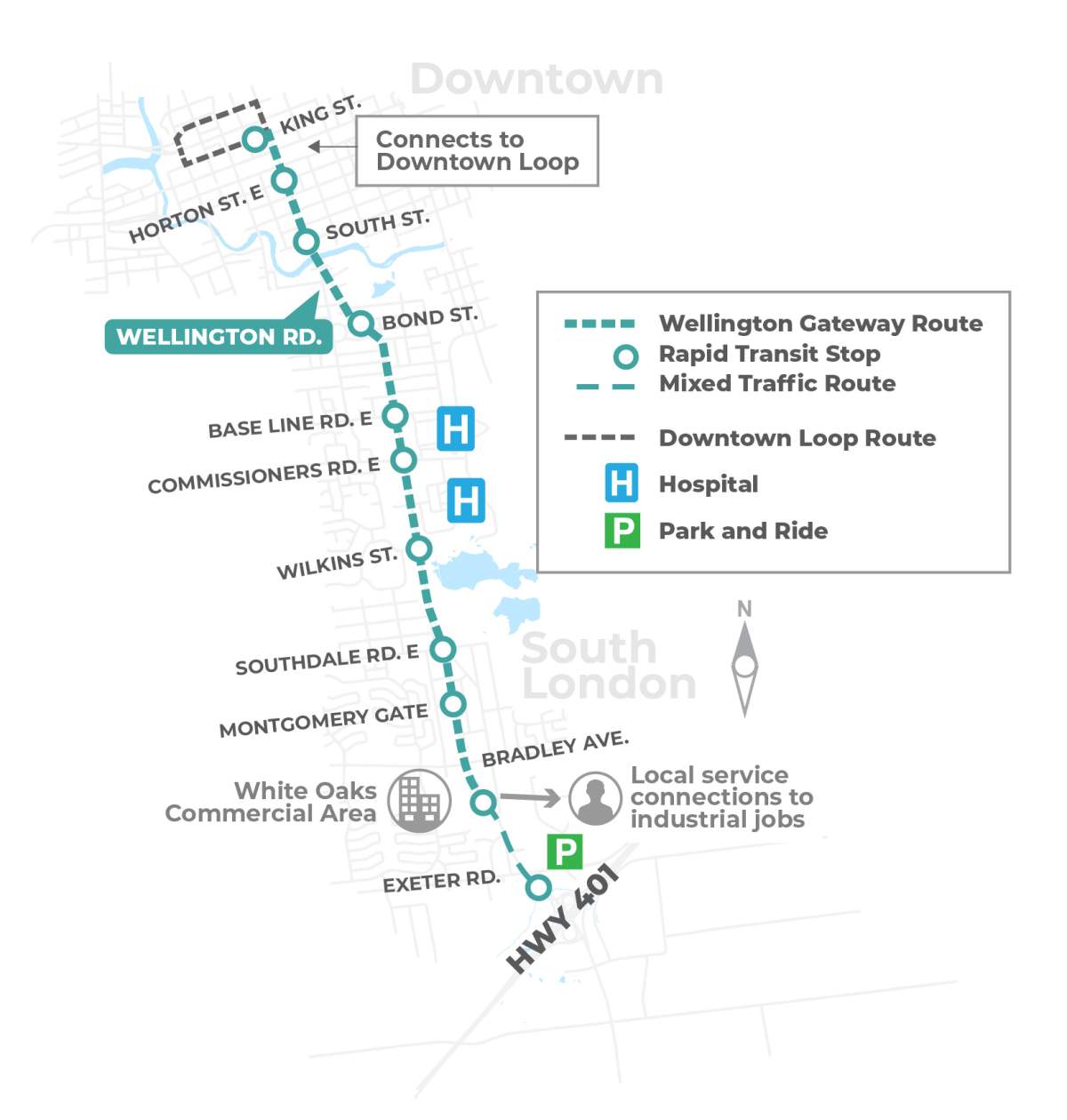City officials in London, Ont., are warning drivers in the downtown core to be aware of additional traffic impacts as a result of underground work for the Downtown Loop portion of London’s bus rapid transit system.

Starting Monday, drivers will no longer be able to use the intersection of Queens Avenue and Talbot Street until at least mid-December, the city says.
The work is to allow for the completion of necessary underground work, including the installation and replacement of water main and storm sewers.
“That intersection is really complex,” said Jennie Dann, director of construction and infrastructure for the city, of Queens and Talbot.
“(There is) lots of underground infrastructure, so there was really no way to avoid a full closure. That’s why we really need to start now if we want to get it finished before winter sets in.”
North and southbound drivers on Talbot will be detoured to Richmond and York streets, while those looking to leave the downtown to the west are being asked to use Richmond and York streets or Horton street, the city said.
Motorists coming from the west end are asked to use Wharncliffe Road, Riverside Drive and York Street to get into the downtown, the city said.
- Veterans Affairs demands repayment of some benefits; process shocks veterans’ advocates
- Air Transat to begin cancelling flights Monday. What you need to know
- Flying Air Transat? Your flight may be cancelled ahead of possible pilots’ strike
- ANALYSIS: NDP leadership hopefuls reckon with oil and gas workers – and their votes
Pedestrians are being encouraged to use nearby streets and utilize wayfinding signs.
The work comes as part of the second phase of the three-phase Downtown Loop project.
Phase 2 got underway earlier this year, while Phase 3, which will focus on Wellington Street from Queens to York, is set to begin next year.

Get daily National news
“We’re making really great progress on the (rapid transit) projects this year, but unforeseen challenges can arise, especially when you’re working in the core,” Dann said.
“We’ve got sewer and infrastructure under the road (that’s) 100 years old. It’s a tangle of deep, complex pipes down there and we have experienced some challenges along the segments, but we’ve really been able to be nimble and adjust our construction schedules and we build flexibility into our contracts for that.”
Elsewhere, work on the Downtown Loop has Ridout Street closed from Fullarton to Dundas streets, and Queens Avenue closed from Richmond and Ridout. Further east, Queens has lane restrictions from Clarence to Richmond.
Ridout Street is down to one lane southbound from Dundas to York streets. Due to work at the Ridout and King street intersection, drivers cannot turn east onto King.
As a result, the city has established temporary two-way traffic along King Street between Ridout and Talbot to allow access to Budweiser Garden’s parking lot and neighbouring businesses.
Dann says this has been the city’s largest ever construction season, with nearly $200-million worth of work taking place across London.
“In the core especially, with our rapid transit project, the downtown loop (is) one of the largest projects we’ve tried to undertake in a single construction season,” she said.
“We really are trying to set ourselves up to be strategic and truly focus on prioritizing the things that can get done this year and look at maybe some possible carryover work in the spring. There’s a lot going on and we really have to take advantage of our full construction season.”
Work on the East London Link portion of the BRT system, which connects the downtown core to Fanshawe College via King Street, Dundas Street, Highbury Avenue and Oxford Street, also began earlier this year and is expected to continue until at least 2024.
Work on the southern leg of the system, the Wellington Gateway, which will run from the downtown to Exeter Road, is slated to begin in 2023 and continue until 2026.
The city’s original BRT proposal included legs to the city’s north and west. Council scrapped the routes in 2019, voting to submit only the three current sections for senior government funding.
The BRT system will be serviced by the London Transit Commission when it becomes operational.

















Comments